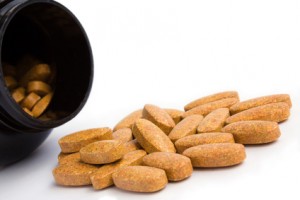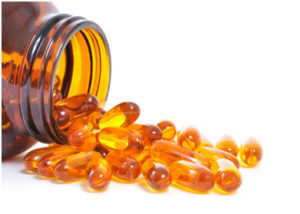Can Supplements Strengthen My Immune System?
 The United States and the rest of the world are facing the biggest challenge of our lifetimes. COVID-19 has killed hundreds of thousands of people and decimated economies around the world.
The United States and the rest of the world are facing the biggest challenge of our lifetimes. COVID-19 has killed hundreds of thousands of people and decimated economies around the world.
As of the publication date of this article we have no vaccine and only one treatment option that appears to be about 30% effective in a preliminary clinical trial. People are scared.
The question I get asked most often is: “Can supplements protect me from COVID-19”. That’s not a question I can answer with confidence. The few studies we have are small and preliminary. Plus, there is too much we still do not know about COVID-19.
However, there are studies about how diet and supplements affect the immune system. I can answer the question, “Can Supplements Strengthen My Immune System”, with confidence. That will be the focus of this article.
However, before covering that, let me take an objective look at what our “New Normal” will be like and how we can prepare for it.
Preparing For The New Normal
 As a scientist I am appalled by the divisive and hyper-partisan arguments about how we should be handling the COVID-19 pandemic. This is a time when our country should be united against a common enemy. Instead I see myths and lies propagated on both sides of this important issue.
As a scientist I am appalled by the divisive and hyper-partisan arguments about how we should be handling the COVID-19 pandemic. This is a time when our country should be united against a common enemy. Instead I see myths and lies propagated on both sides of this important issue.
The press only magnifies the problem by repeating the myths without fact checking. Whether they are on the left or the right, the media only repeats myths that fit their narrative. As a result, people like you are confused and scared.
Let me try to give you a more objective and scientific view of what the “New Normal” will look like, and how we can prepare for it.
Let’s start with one of the biggest arguments over the past few weeks – when should we reopen our country. This argument is based on the myth that if we wait long enough, the virus will be gone, and life can return to normal.
Nothing could be further from the truth. In reality viruses don’t work that way. They continue to circulate through the population at low levels. Whenever we emerge from our homes and resume our daily lives, the virus will be lurking. There will be flare-ups. There will be hot spots. There will be deaths. And the press will report every one.
So, the question should not be when we emerge. It should be how we emerge. We should emerge cautiously. We should continue to take appropriate precautions. These precautions will become our “New Normal” until we have an effective vaccine. By now, you probably have the CDC precautions memorized, but let me repeat them here:
- If you are sick, stay home until you recover. If your symptoms worsen, contact your doctor right away.
- If you are exposed, get tested right away and self-quarantine for 14 days if you test positive.
- When you go out, wear a face mask and practice social distancing. When you get home, wash your hands in soap and water for 20”.
- For now, we will need to avoid the customary handshake (and if you are from the South like me, the customary hug).
- If you are very old or very sick, you should stay home as much as possible. If you have a loved one in this category, you should do everything in your power to protect them from exposure.
- The guideline that is hardest to project into the future is the one on crowd size. It is hard to predict what the CDC will recommend about crowd size as part of our “New Normal” a few months from now. However, because this virus is extremely contagious, it may be risky to attend any gatherings where there are large, tightly packed crowds for the foreseeable future. This could include some of our favorite things – like movies, live theater, night clubs, and sporting events.

Finally, there is another big myth, namely that the virus will simply disappear once we have a vaccine. Vaccines reduce your risk of exposure because fewer people are carriers of the virus. However, coronaviruses never disappear. They continue to circulate in the population for decades.
Even after we have a vaccine, people will still get sick from COVID-19. People will still die from COVID-19. The difference is that we will no longer hear about COVID-19 cases and deaths on the nightly news. Those cases and deaths will just become part of the statistics that the CDC collects on flu-like illnesses each year – and everyone ignores.
Now that I have discussed what the “New Normal” will look like and summarized the CDC guidelines for reducing your exposure to COVID-19 as the lockdown eases, let me add another guideline of my own:
- Keep your immune system as strong as possible.
Why Is Keeping Your Immune System Strong Important?
 It is no secret that the media likes to focus on bad news. It is the bad news that draws people in and keeps them coming back for more.
It is no secret that the media likes to focus on bad news. It is the bad news that draws people in and keeps them coming back for more.
Pandemics are no different. It doesn’t matter whether we are talking about the Spanish flu, SARS, MERS, or COVID-19. We focus on cases and deaths – the bad news. We ignore the good news – there are millions of people who were infected and had no symptoms.
However, if you have been listening closely to what the experts have been saying rather than relying on the media for your information, the good news is obvious.
- 80-85% of people who have tested positive for COVID-19 have mild or moderate symptoms. Their symptoms are no worse than they experience with the seasonal flu.
- Preliminary antibody tests suggest that the number of people infected with COVID-19 who experience no symptoms may be 10 to 40 times higher than reported cases.
- The experts say that the difference is a strong immune system. They tell us that it is people with weakened immune systems that suffer and die from COVID-19.
So, how do you keep your immune system strong? Let’s start by looking at the role of supplementation.
Can Supplements Strengthen My Immune System?
 Those of you who follow me know that I consider supplementation as just one aspect of a holistic approach to health. However, I am starting with supplements because the question I am often asked these days is: “Can supplements protect me from COVID-19”.
Those of you who follow me know that I consider supplementation as just one aspect of a holistic approach to health. However, I am starting with supplements because the question I am often asked these days is: “Can supplements protect me from COVID-19”.
As I said at the beginning of this article, that is not a question I can answer with confidence. Instead, the question you should be asking is, “Can Supplements Strengthen My Immune System?”
As I mentioned above, the experts are telling us that it is people with weakened immune systems who suffer and die from COVID-19. That means it is important to keep our immune system as strong as possible.
How do we do that? Here is what an international group of experts said in a recent review (PC Calder et al, Nutrients, 12, 1181-1200, 2020).
1) “A wealth of mechanistic and clinical data show that vitamins A, B6, B12, C, D, E, and folate; trace elements zinc, iron, selenium, magnesium, and copper; and omega-3 fatty acids EPA and DHA play important and complementary roles in supporting the immune system.”
2) “Inadequate intake and status of these nutrients are widespread, leading to a decrease in resistance to infections, and an increase in disease burden.”
They then made the following recommendations:
1) Supplementation with the above micronutrients and omega-3 fatty acids is a safe, effective, and low-cost strategy to help support optimal immune function.
-
- They recommended 100% of the RDA for vitamins A, B6, B12, C, D, E, and folate and minerals zinc, iron, selenium, magnesium, and copper in addition to the consumption of a well-balanced diet.
-
- They recommended 250 mg/day of EPA + DHA.
2) Supplementation above the RDA for vitamins C and D is warranted.
-
- They recommend 200 mg/day of vitamin C for healthy individuals and 1-2 g/day for individuals who are sick.
-
- They recommend 2000 IU/day (50 ug/day) for vitamin D.
3) Public health officials are encouraged to include nutritional strategies in their recommendations to improve public health.
Their recommendations could be met by a multivitamin that provides all the micronutrients they recommend, an omega-3 supplement, and extra vitamins C and D.
What Else Should I Do To Strengthen My Immune System?
 As I said above, supplementation is only one part of a holistic approach to a strong immune system. Here are the other components of a holistic approach:
As I said above, supplementation is only one part of a holistic approach to a strong immune system. Here are the other components of a holistic approach:
1) It starts with a healthy diet.
-
- Eat foods from all 5 food groups.
-
- Eat plenty of fruits and vegetables. They provide antioxidants and phytonutrients that are important for our immune system.
-
- Eat plenty of high fiber foods. Include whole grains and beans in addition to fruits and vegetables. That’s because the friendly gut bacteria that strengthen our immune system need a variety of fibers from different food sources to feed on.
-
- Eat oily fish on a regular basis.
-
- Avoid sodas, sugary foods, and highly processed foods.
-
- Avoid high fat diets
2) Get adequate sleep. For most of us, that means 7-8 hours of sleep a night.
3) Maintain a healthy weight.
4) Get adequate exercise. Aim for a minimum of 150 minutes of moderate intensity exercise each week.
5) Manage stress and anxiety in healthy ways. Yes, that means if you let the news about COVID-19 cause anxiety, you are weakening your immune system. You may want to turn off the news and try prayer, meditation, yoga, or whatever relieves stress for you.
The Bottom Line
In this article, I summarized the “New Normal” we face as we emerge from lockdown and how to navigate the new normal as safely as possible. If I were to summarize this article in a few short sentences, this is what I would say:
Until we have an effective vaccine the “New Normal” is a world in which a dangerous virus is lurking in the community, waiting to strike the unprepared.
Forget all the angry rhetoric about when we should emerge from lockdown. The important question is not when we emerge. It is how we emerge.
We don’t need to stay huddled in our homes, fearful to leave, unless we are very old or very sick.
We do need to take appropriate precautions when we leave home based on the recommendations of the CDC. None of us are invincible as far as this virus is concerned. More importantly, if we bring the virus home, we may kill the very people we love the most. We need to follow the guidelines.
We should also make sure that our immune system is as strong as possible through a holistic combination of diet, supplementation, adequate sleep, exercise, weight management, and stress reduction.
For more information on CDC COVID-19 Guidelines, click here.
For more details about preparing for the new normal and diet & supplementation recommendations, read the article above.
These statements have not been evaluated by the Food and Drug Administration. This information is not intended to diagnose, treat, cure, or prevent any disease.






















